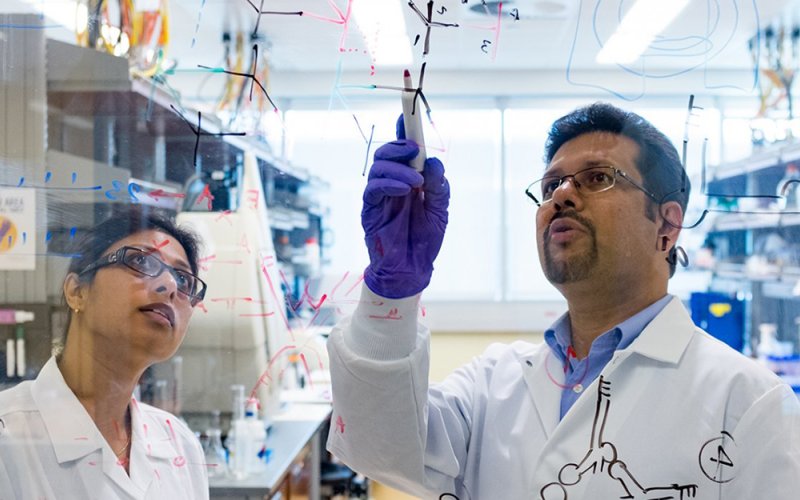Stem Cell Biologist Explores a New RNA Code to Thwart Degenerative Disease

ALBANY, N.Y. (Dec. 16, 2021) — Skeletal muscle development and regeneration largely depend on a healthy population of muscle stem cells (MuSCs) and MuSC-derived myoblast cells. But in various muscle degenerative diseases, the pool of muscle stem cells is gradually lost, with no new muscle fibers regenerated.
In 2019, RNA Institute Scientist Bijan K. Dey and his lab team, through a three-year NIH R15 award, found that levels of m6A — the most prevalent internal modification present in the messenger RNA (mRNA) of all higher organisms — are impaired (dysregulated) in Duchenne Muscular Dystrophy (DMD) samples. In exposing DMD pathophysiology at the molecular level, Dey believes this opens the way for a therapeutic pathway for DMD.
Dey and his team have now received a new NIH R21 award, which, while directly linked to their DMD work over the past two years, centers on the new RNA code (epitranscriptomics) and its role in skeletal muscle stem cell biology. “My lab is investigating the role of the most abundant code — m6A RNA modification — in skeletal muscle stem cell biology and muscle degenerative diseases, including DMD,” said Dey.
RNA Institute Director Andy Berglund’s own research career has centered on neuromuscular disease with an intense focus on discovering therapeutic strategies to deal with Muscular Dystrophy. He said, “I am excited for Bijan and his team that his innovative research on RNA modifications in Duchenne Muscular Dystrophy has been recognized by this prestigious NIH award and look forward to the great research that will result from this funding.”
Dey explained that his new award “explicitly deals with the role of m6A in skeletal muscle stem cell biology. Our findings will have important implications for understanding DMD pathophysiology and in devising a new platform for this devastating childhood muscle degenerative disease.”
DMD manifests in early childhood and leads to progressive loss of skeletal muscle, resulting in premature death, usually by the age of 30. Although available treatment options extend the lifespan and ease the symptoms, science currently lacks effective treatments that can either cure DMD or stop its progression.
The development of an effective therapy for DMD has been significantly hindered due to the lack of a comprehensive understanding of DMD pathophysiology at the molecular level. “One novel unexplored area,” said Dey, “is the role of epitranscriptomic gene regulation in DMD pathophysiology. Epitranscriptomic gene regulation is an emerging area of research that aims to understand how enzyme-mediated chemical modifications on RNAs affect their biological function.”
Dey believes his team’s work on these grants “will make a significant impact by providing mechanistic insights into a novel mode of post-transcriptional gene regulation in DMD pathophysiology. This study will also establish a solid foundation for future translational efforts by revealing the molecular mechanism of m6A mRNA methylation, a potential therapeutic target for DMD.”
One of the challenges to traditional drug development to treat a genetic disease like DMD, said Dey, is that DNA and RNA remain mostly “undruggable” by small molecule inhibitors. Hence, it is critical to discover alternative, potentially more “druggable” or actionable points in a disease such as DMD — including RNA modifying enzymes with a crucial role in regulating the disease process.
“Therefore, our innovation will help understand muscle pathophysiology in a new direction and devise therapeutic platforms in the long run.”




